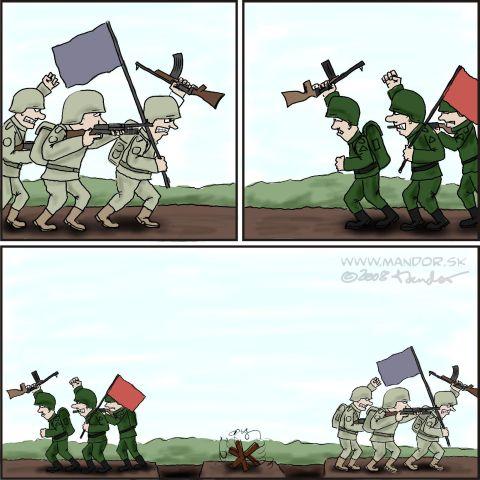A Case Study in War

This is a quick follow-up to Thesis, Antithesis: the Story of a Great War.
Structure and Unit
In examining our political world we must recognise two basic analytical concepts: structure and unit.
The latter, unit, is where most analysts spend their time, carefully (or, more often, not so carefully) examining the characteristics and motives of individual alliances, and making predictions based on these observations. The problem with such analyses is that they typically come to see alliances as living in a vacuum, and thus come to imagine said characteristics and motives to be static properties, leaving the theories developed with zero predictive qualities.
The result is what we saw during the Karma war: dreams of multipolarity -- of multiple blocs competing independently, winning and losing wars, and building back up again to challenge the others on an equal footing.
The former concept, structure, examines the underlying realities of our world -- when someone mentions international anarchy, they are talking about structure. Unfortunately discussion on this rarely goes past giving it a name. Structure is what provides alliances with their incentives and disincentives: it is what broadly makes a rational action rational and an irrational action irrational. If I walk off a cliff it is only irrational because an element of the physical structure, gravity, will crash me to the ground; if instead I floated walking off a cliff would no longer be irrational.
Structural analysis alone cannot tell us when or where a great war will occur (though it can track the development of bipolarity), but rather gives us a wider view as to what will occur over long periods of time.
The Great War
The past seven months have been a powerful demonstration of structure at work. As we emerged from the Armageddon War we could recognise a number of blocs and forces, including Complaints and Grievances, SuperFriends, Citadel, Frostbite, former 'Hegemony' and many others. Under the unit analysis we would expect each of these blocs to build up independently to pursue their own agendas, but this is not what we saw.
As the months rolled on what we saw was clear antagonisms arise between certain alliances and certain blocs as they got in each others way politically and culturally. As these antagonisms developed we saw them suck in greater and greater forces, destroying any proto-multipolarity in favour of a powerful bipolarity. The reason for this is simply that it would not be rational for an alliance to pursue a 'pure' agenda (that is, its whole program) where there is one side of the conflict supporting a part of their agenda and another side supporting an agenda that would be detrimental to their own. As a consequence of this alliances sacrifice their ideal world in order to practically advance its salient elements. This is exactly the same dynamic that we see when alliances join blocs in the first place.
Recognising this we can see why nearly every major alliance in the world quickly became sucked into this two-sided conflict, codifying the bipolar world that had been in development. It was only rational for alliances to join a side and fight for the world that would inevitably emerge after it, based on the culture of the victorious alliances.
It follows from this polarising that any minor incident will stand the risk of becoming a great war, and so we saw two great war build-ups with similar alliances on each side in less than a month, the second after the first failed to resolve the underlying conflict (much as the 'Third Great War' followed the Second). One could also hypothesise from this that the first attempt to spark a great war via The Pheonix Federation, was a calculated provocation to draw the opposing forces out before they were fully prepared.
We can also recognise the disastrous consequences of the New Polar Order's acceptance of peace, which will inevitably be seen by those on its side as a betrayal of their interests, costing them the trust that is so vital in a world of imperfect information and the resultant suspicion. From here (assuming a Complaints & Grievances victory against TOP/IRON/NSO), barring a drastic political move, they will either be forced into the arms of a world order that is contrary to their interests, or be left isolated on the wrong side of the tracks.
Likewise we can see the 'two wars' theory being advanced by C&G as the 'second' war is in effect a battle against half of the interests opposed to them, allowing a divide and conquer strategy that could set them up in a powerful unipolar position for some time to come.
New Regime, Old World
The post-NPO world therefore has served as a slap in the face to unit analysis and a confirmation of structural analysis. We can now see for the first time that the NPO did not cause the great war structure of our world, but rather was only a unit within it, vindicating the predictions made by structural analysis.
We can therefore also expect the predictions made to continue with the end of this war. If C&G and their allies emerge victorious a new unipolar world will emerge built in the image of its hegemonic bloc(s), and, over time, a new counter-hegemonic bloc will develop to challenge it before founding a new unipolar regime. We can also expect the consequences of this, as, for example, wars like Athens attacking TPF or NpO attacking \m/ no longer develop into great wars, but remain curbstomps, and the treaty web continues to proliferate.


7 Comments
Recommended Comments